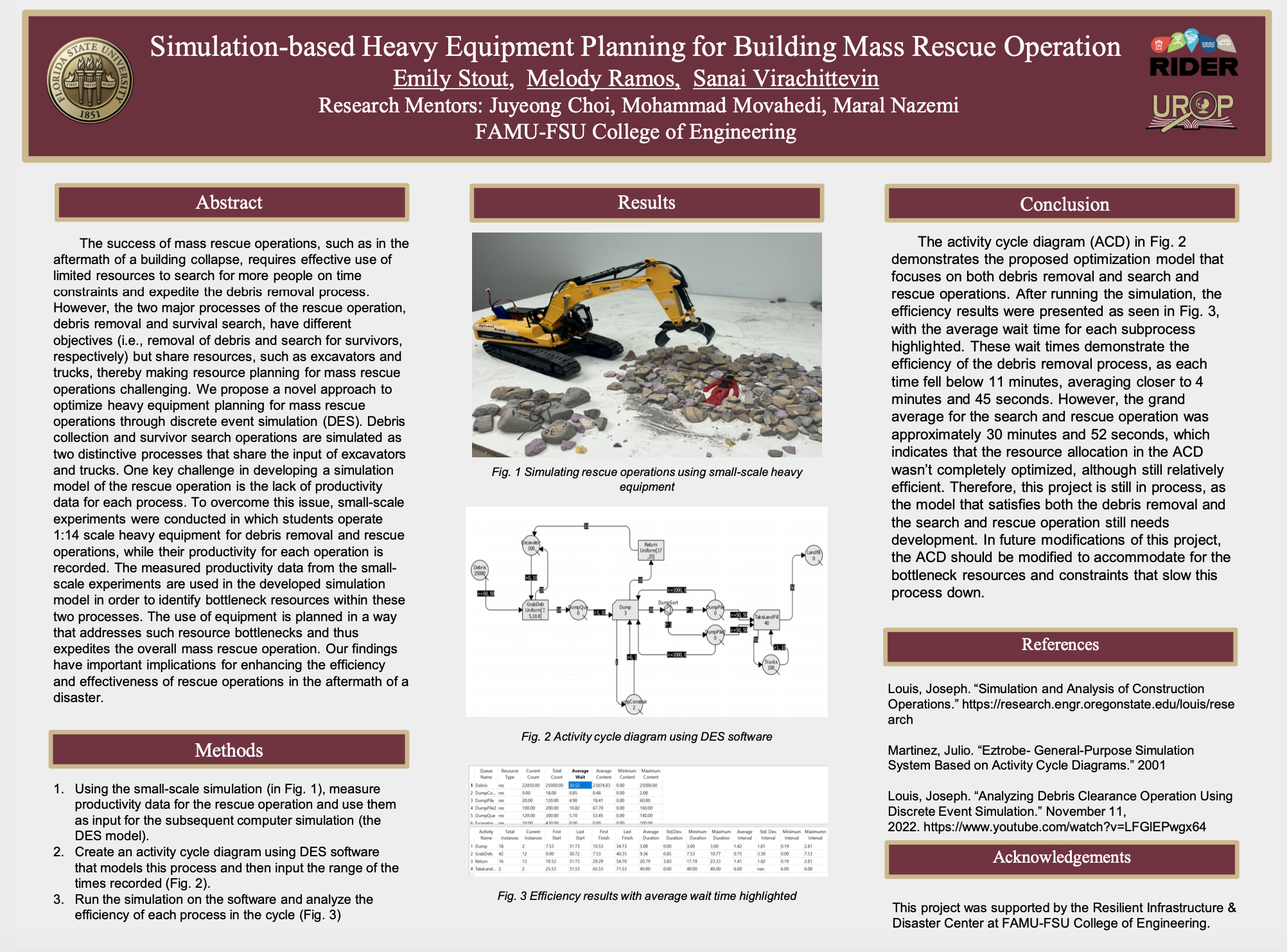Research Symposium
23rd annual Undergraduate Research Symposium, April 6, 2023
Melody Ramos Poster Session 3: 2:45 pm - 3:45 pm/ Poster #112

BIO
Hello! My name is Melody Ramos and I am majoring in civil engineering. I am an active member of ASCE and will be competing in the 2023 Southeast Student Symposium. I am also on the FSU Colorguard team and perform/travel with the football team. With my degree, I hope to go into structural engineering and possibly bridge design.
Simulation-based Heavy Equipment Planning for Building Mass Rescue Operation
Authors: Melody Ramos, Juyeong ChoiStudent Major: Civil Engineering
Mentor: Juyeong Choi
Mentor's Department: Civil and Environmental Engineering Mentor's College: Ph.D. Civil Engineering- Purdue University 2018, M.S. Civil Engineering- Purdue University 2015, B.S. Architectural Engineering- University of Seoul 2013 Co-Presenters: Emily Stout, Sanai Virachittevin
Abstract
The success of mass rescue operations, such as in the aftermath of a building collapse, requires effective use of limited resources to search for more people on time constraints and expedite the debris removal process. However, the two major processes of the rescue operation, debris removal and survival search, have different objectives (i.e., removal of debris and search for survivors, respectively) but share resources, such as excavators and trucks, thereby making resource planning for mass rescue operations challenging. We propose a novel approach to optimize heavy equipment planning for mass rescue operations through discrete event simulation (DES). Debris collection and survivor search operations are simulated as two distinctive processes that share the input of excavators and trucks. One key challenge in developing a simulation model of the rescue operation is the lack of productivity data for each process. To overcome this issue, small-scale experiments were conducted in which students operate 1:14 scale heavy equipment for debris removal and rescue operations, while their productivity for each operation is recorded. The measured productivity data from the small-scale experiments are used in the developed simulation model in order to identify bottleneck resources within these two processes. The use of equipment is planned in a way that addresses such resource bottlenecks and thus expedites the overall mass rescue operation. Our findings have important implications for enhancing the efficiency and effectiveness of rescue operations in the aftermath of a disaster.
Keywords: Engineering, Simulation, Debris, Rescue


